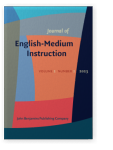Vol. 2:2 (2023) ► pp.109–133
Positional identities negotiated within a collective identity
Japanese college students’ ambivalence in an EMI classroom
This qualitative study explores Japanese students’ positional identities in EMI contexts. Their positioning act is operated by the sociocultural norms of a program shared among community members. Individual semi-structured interviews were conducted with a total of 13 first-year students enrolled in an undergraduate English-taught program (ETP) at a Japanese national university. A thematic analysis of the interview data produced four main themes: (a) acting self-identification as a peripheral position, (b) hierarchy in a Japanese cohort, (c) an identity gap between the ideal self and reality, and (d) the ETP-A collective identity for membership negotiation. The study shows how participants position themselves and others based on English proficiency and academic culture, whereby students force themselves to acculturate for legitimate full participation. Such traits reflect collective identities and function as forms of sociocultural norms that determine legitimate membership. Furthermore, such norms lead to stratification between students: Japanese students identify themselves as inactive members of the ETP group with limited second-language (L2) English. Conversely, the collective identity helps them reclaim their ETP membership in Japanese-medium instruction classes with Japanese students from outside of the ETP. Japanese students’ positional identities are discussed in terms of L2 English competence and classroom culture.
Article outline
- Introduction
- Implementation of EMI in higher education in Japan
- Conceptual framework: Positional identities
- The study: Investigation of identity construction in the Japanese EMI context
- Research context
- Participants
- Data collection and analysis
- Findings: Students’ fluid and dynamic positional identities
- Acting self-identification as a peripheral position
- Hierarchy in a Japanese cohort
- An identity gap between the ideal self and reality
- The ETP-A collective identity for membership negotiation
- Discussion of positional identities vis-à-vis a collective identity
- Multiple positional identities in the EMI classroom
- Collective identity as a focal reference
- Sociocultural norms in the EMI classroom
- The gap in classroom cultures
- Mutual relationship of positions, identities, and positional identities
- Conclusion
- Notes
-
References
